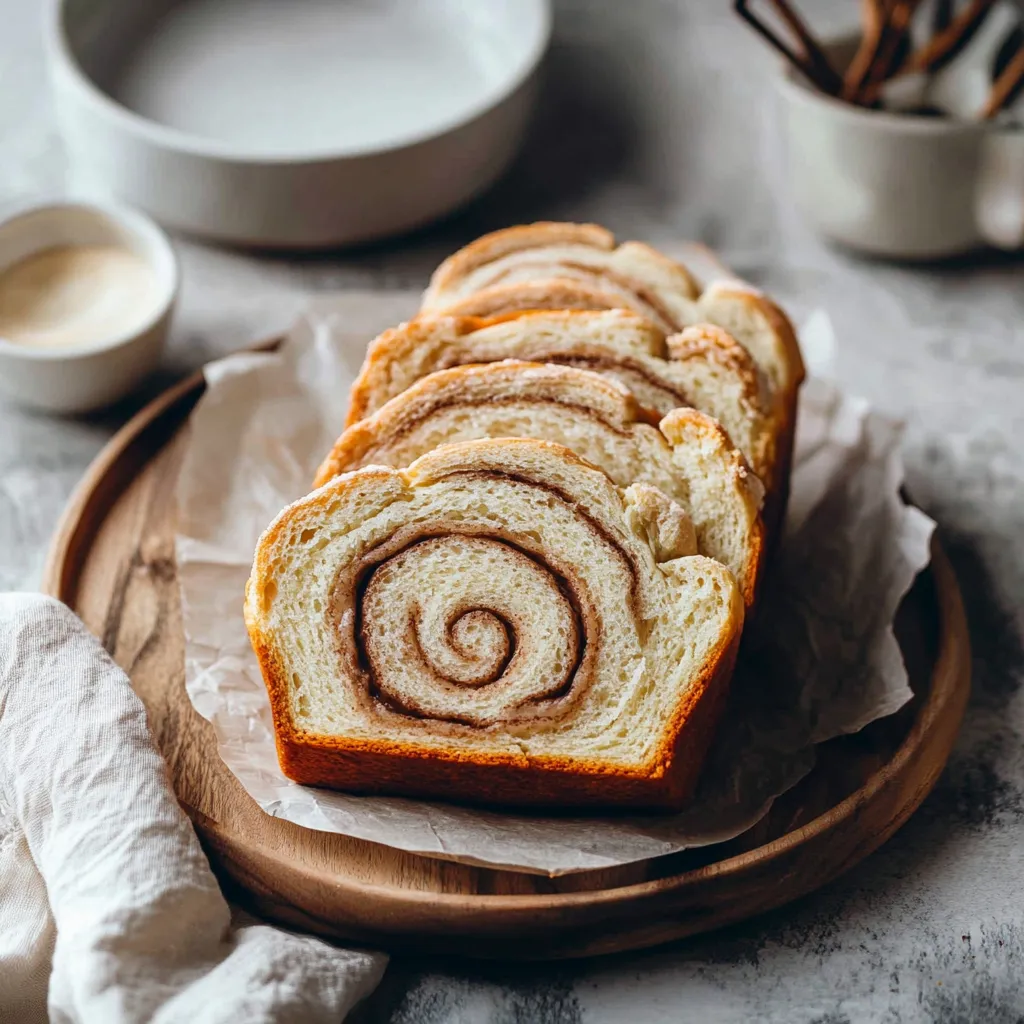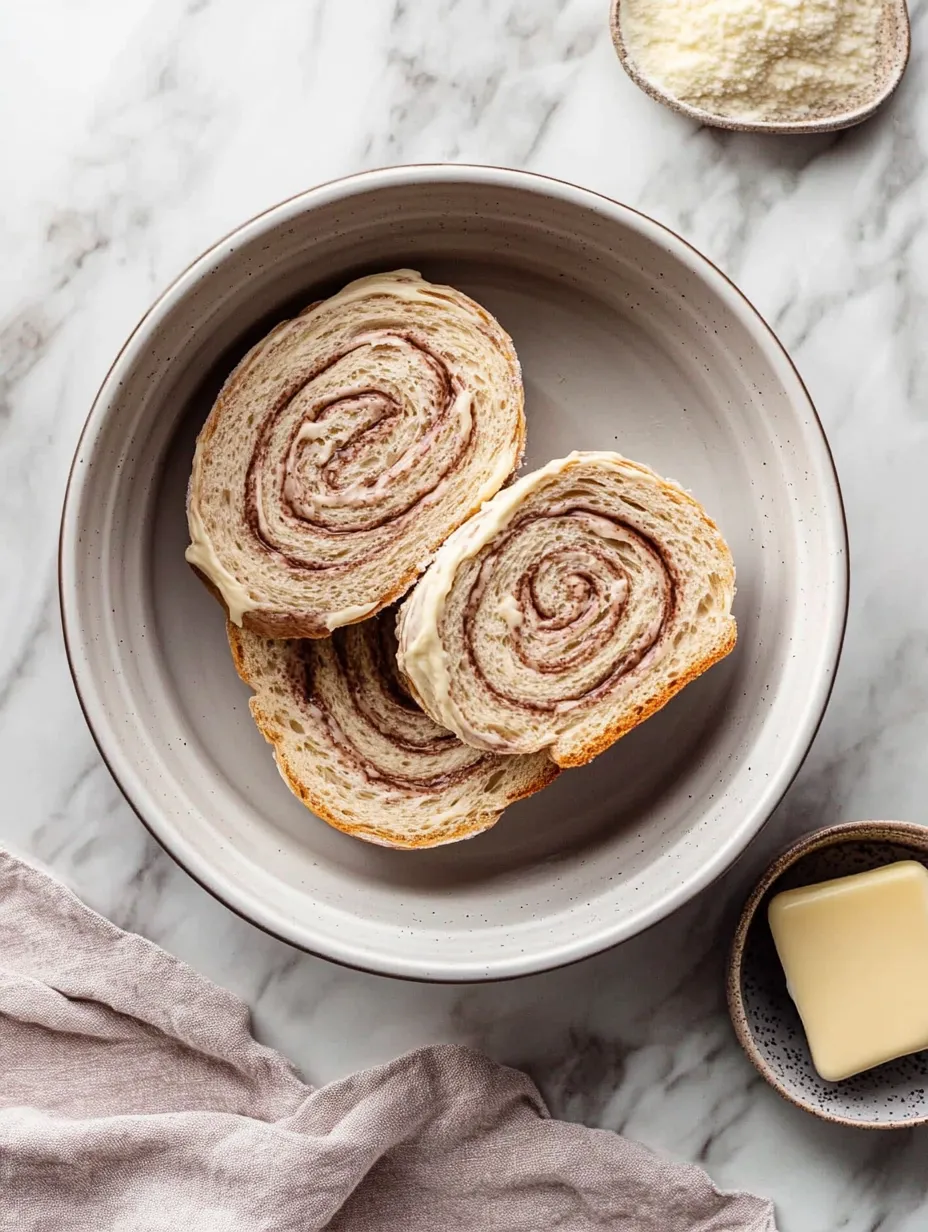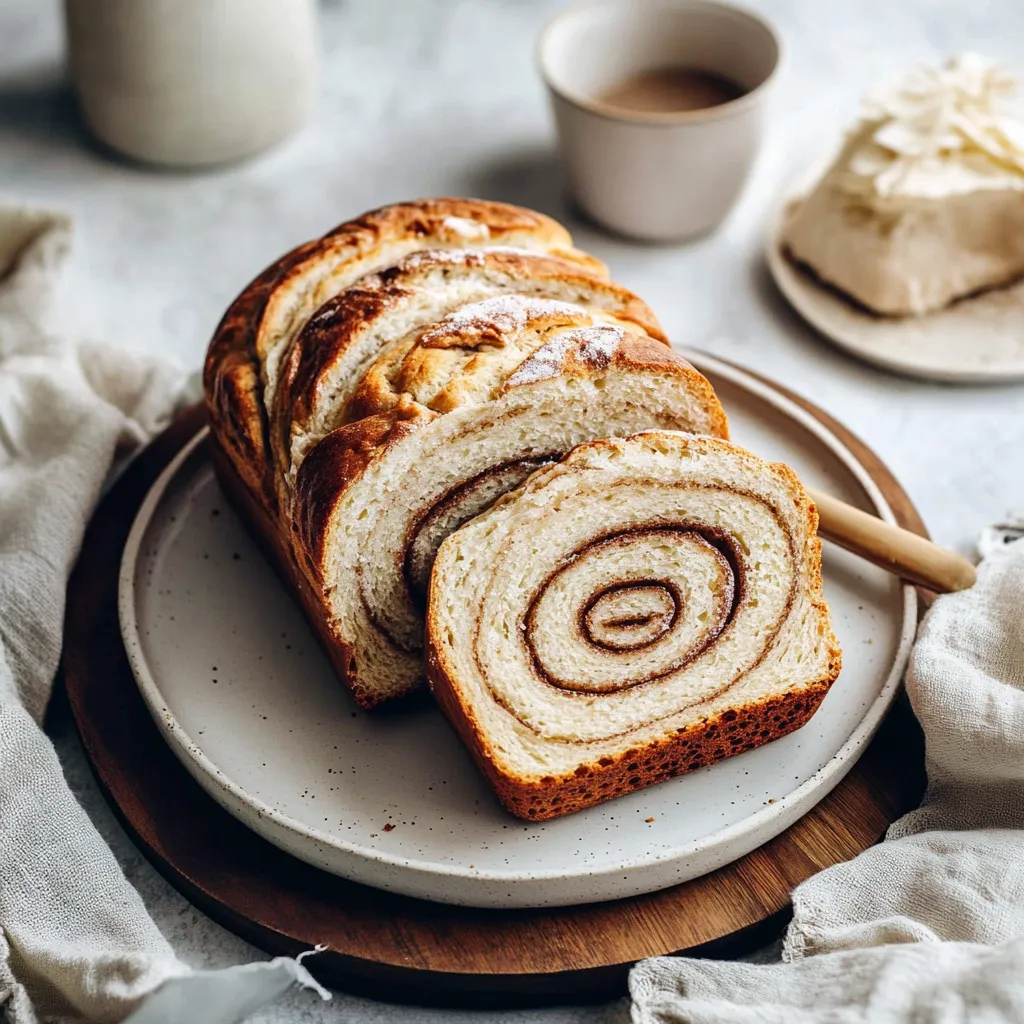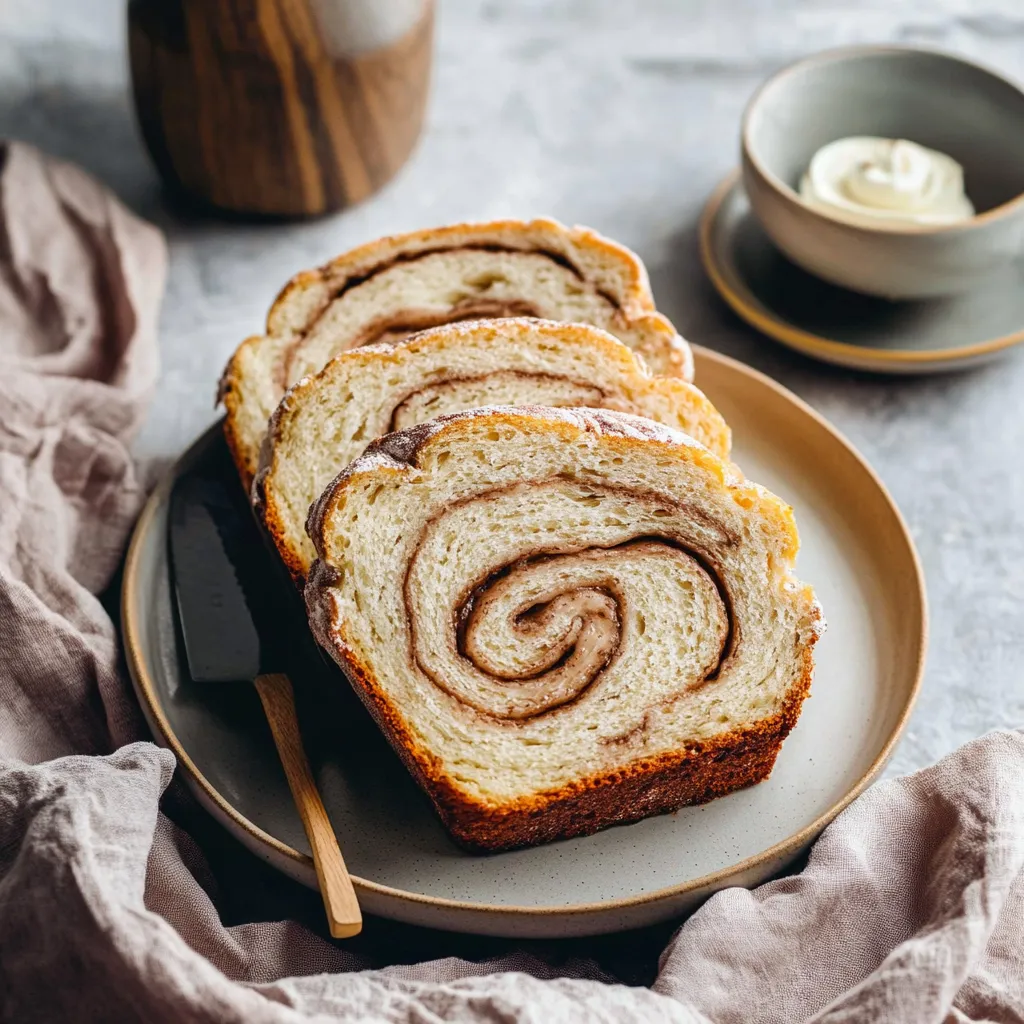 Pin it
Pin it
When homemade cinnamon swirl bread bakes in your kitchen, it fills your home with a cozy, inviting smell that's simply irresistible. This much-loved favorite brings together old-fashioned breadmaking with the tempting sweetness of cinnamon spirals, giving you a loaf that looks fancy but tastes like pure comfort.
I've tweaked this recipe for so many years, and I've learned it's all about taking your time and watching the little things. The first day I cut into a loaf and saw that gorgeous spiral with no empty spaces, I finally got why bakers feel so proud of their work.
Key Ingredients
- Bread flour: Grab fresh, unbleached stuff - the protein level really matters for good structure
- Active dry yeast: Make sure it's not old and bubbles properly - always look at those dates
- Whole milk: Brings a creaminess you just can't get with plain water
- Unsalted butter: Lets you decide how much salt goes in
- Ground cinnamon: Needs to smell strong and spicy - toss it if it's been sitting around longer than 6 months
 Pin it
Pin it
Making Your Bread
- Step 1:
- Start by waking up your yeast in warm water (100-110°F) with a tiny bit of sugar. Wait for it to get bubbly and foamy - this takes around 5-10 minutes. If nothing happens, your yeast might be dead.
- Step 2:
- While that's happening, warm your milk to the same temp as the water. Mix it with some melted butter that's cooled down a bit. Getting the temperature right really matters - too hot and you'll kill the yeast.
- Step 3:
- Put your bread flour, the rest of your sugar, and salt in a big bowl. Make a hole in the middle and pour in your wet stuff. Stir until you get a rough, shaggy-looking dough.
- Step 4:
- Dump it onto a floured counter and knead for 8-10 minutes until it feels smooth and stretchy. Your dough's ready when you can stretch a piece thin enough to see through without it breaking.
- Step 5:
- Put it in a greased bowl, cover with a damp towel, and let it grow in a warm spot until it's twice as big, usually 1-2 hours. Around 75°F works best.
- Step 6:
- Once it's risen, punch it down and roll it into an 8x20-inch rectangle. Being exact helps here - actually using a ruler makes a difference.
- Step 7:
- Brush some beaten egg white on top and sprinkle your cinnamon-sugar mix all over, but leave about a half-inch empty around the edges.
- Step 8:
- Roll it up tight from the short end, and pinch the edges closed. The tighter you roll, the prettier your spiral will look when sliced.
 Pin it
Pin it
I first learned about this bread in my grandma's kitchen. She taught me that getting those perfect swirls means rolling the dough just right. 'Handle it firmly but don't squish it,' she'd tell me, 'kind of like you're wrapping up a baby.'
Creating Beautiful Swirls
After baking tons of loaves, I've figured out what really makes those spirals pop: Rolling your dough to the same thickness everywhere. Spreading your cinnamon sugar evenly across the surface. Keeping good tension as you roll it up. Making sure the seam is totally sealed.
Watching Your Temps
Getting the temperatures right can make or break your bread: Keep wet ingredients between 100-110°F. Find a nice warm spot for rising. Make sure your oven's truly at the right heat. Let the bread cool completely before you slice it.
Fixing Common Problems
Easy answers when things go wrong: Seeing gaps in your spiral? Use more egg white next time. Bread too dense? Your yeast might be old. Rising unevenly? Turn the pan halfway through. Filling leaking out? Leave wider empty edges.
Fun Ways to Enjoy
It's great plain with butter, but you can also try: Using it for the most amazing French toast with maple butter. Making incredible bread pudding. Grilling slices with cinnamon honey drizzle. Creating homemade ice cream sandwiches.
After baking this bread countless times, I've realized its true magic isn't just in those pretty swirls. It's how it brings folks together. The way everyone hangs around the kitchen while it bakes, the smiles when that first warm slice gets buttered, and how it turns breakfast into something special - that's when I know I've done it right.
Understanding Rich Dough
I've learned so much about working with this kind of soft, rich dough: The butter and eggs change how the gluten forms. The sugar slows down how the yeast works. The type of flour affects the bread's structure. Getting the wet/dry balance just right makes the perfect soft texture.
Tasty Twists
 Pin it
Pin it
Want to change things up a bit? Try: Adding orange zest and cardamom to your filling. Mixing in dark chocolate with the cinnamon. Using maple syrup and crushed pecans instead. Browning your butter before using it in the dough.
Quick Fixes
When you need to save your bread: Dough looking too dry? Add milk just a teaspoon at a time. Too sticky? Let it rest before adding more flour. Not rising enough? Give it more time in a warmer spot. Over-risen and puffy? Reshape it and start the second rise again.
Sharing The Love
This bread makes wonderful presents: Wrap it in a clean kitchen towel while still warm. Add a note with ideas for serving. Pack it with a small jar of homemade butter. Tell them the story of how you made it.
I've made this cinnamon swirl bread so many times now, and I've come to think of it as more than just food. It's a lesson in slowing down, a way to practice your baking skills, and one of the nicest things you can give someone. Whether you're making it for Saturday morning breakfast or taking it to a friend's house, each loaf has this amazing way of creating little moments of happiness and togetherness.
Frequently Asked Questions
- → Can I prepare the dough in advance?
- Sure! You can let it rise for the first time in the fridge overnight. Just bring it back to room temperature before shaping.
- → Why does my loaf have gaps in the swirl?
- Moisture can loosen the dough from the sugar. Try brushing the dough with egg whites and poking a few small holes before you bake.
- → Is it okay to freeze the loaf?
- Totally! Wrap it tightly, and it’ll keep in the freezer for up to 3 months. Thaw it in the fridge overnight.
- → Is bread flour necessary, or will regular flour work?
- Bread flour’s better since it gives more structure. All-purpose flour might make a softer loaf, but it won’t hold as well.
- → When’s the bread done baking?
- It’ll be golden on top and should read 195-200°F inside with a thermometer.
